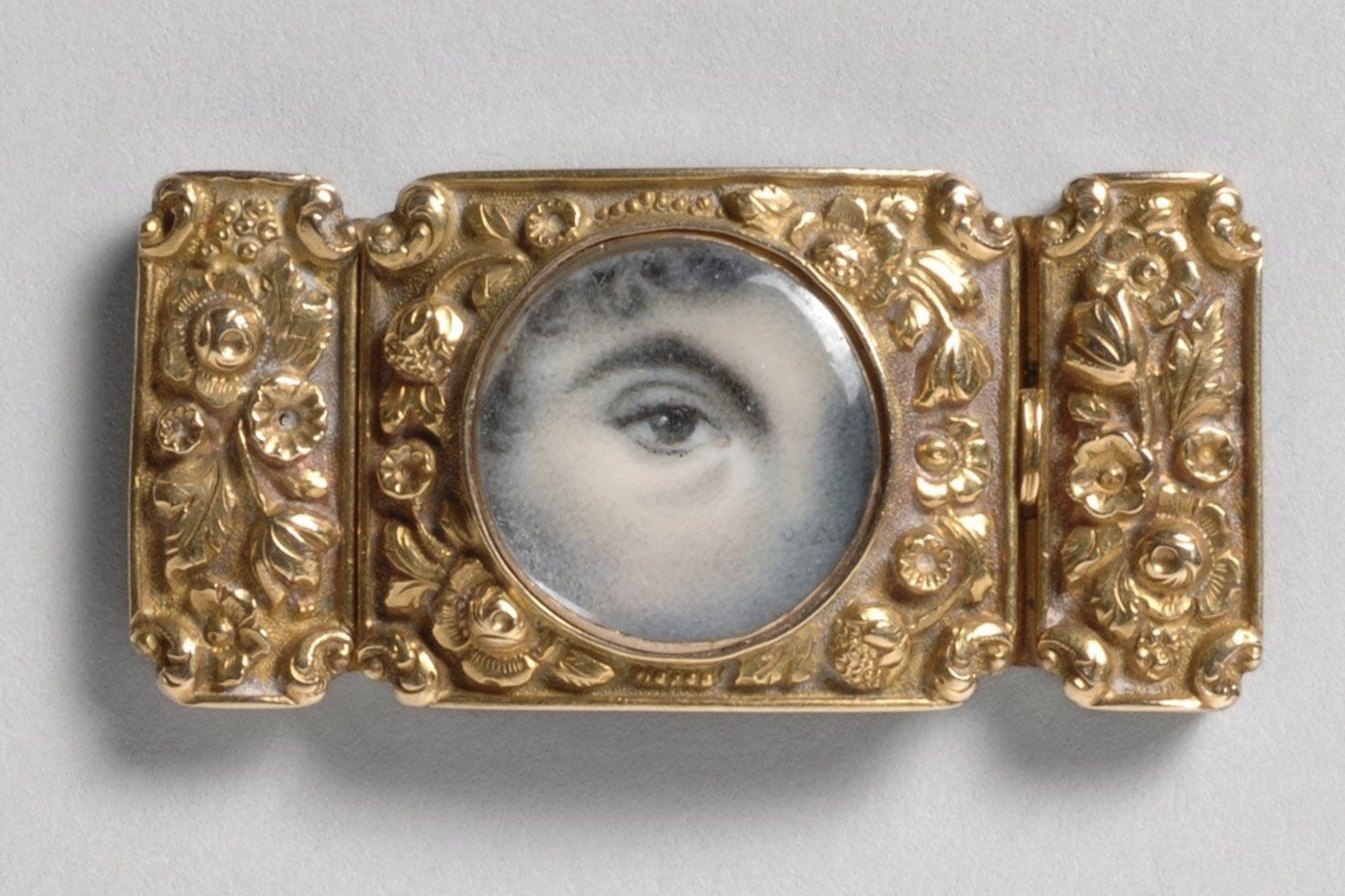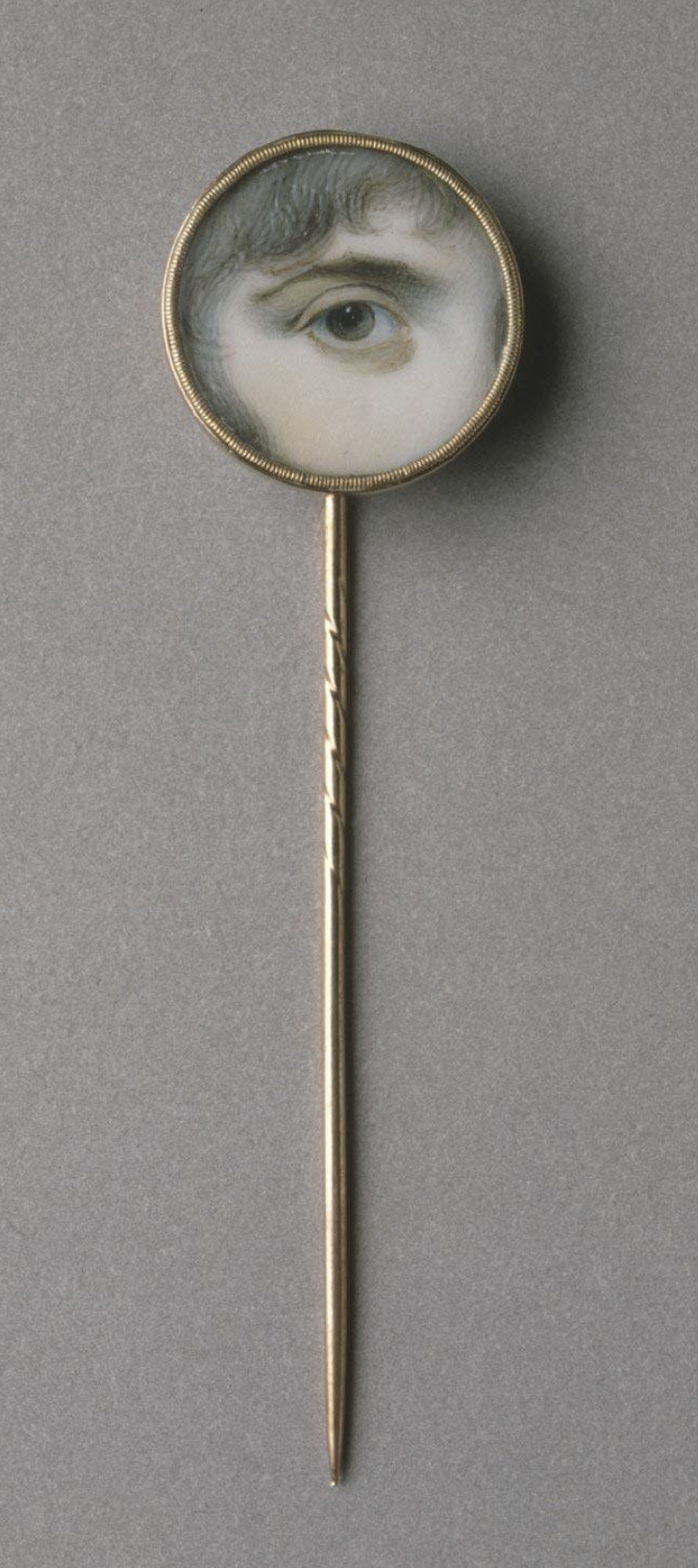The History of Eye Miniatures: The "Lover’s Eye" Jewelry
Eye miniatures, often referred to as "Lover’s Eye" jewelry, are one of the most fascinating and mysterious trends in antique jewelry history. These small yet highly detailed paintings of a single eye were popular during the late 18th and early 19th centuries, often set into brooches, rings, lockets, or bracelets. Their origins are intertwined with secret romance, royalty, and sentimental keepsakes.
Origins: A Royal Love Story 👑❤️
The trend of eye miniatures is believed to have started in 1785 with Prince George of Wales (later King George IV). He had fallen in love with a twice-widowed Catholic commoner, Maria Fitzherbert. Since their relationship was forbidden due to royal laws, George sought a way to secretly express his devotion. He commissioned a miniature painting of his eye, set in a locket, and sent it to Maria.
Touched by the intimate and symbolic nature of the gift, Maria reciprocated by sending a similar locket featuring her own eye. This act inspired a romantic trend among the aristocracy, and eye miniatures soon became a popular token of love, devotion, and even mourning.
📖 Source: Gere, Charlotte & Rudoe, Judy. Jewellery in the Age of Queen Victoria: A Mirror to the World. London: British Museum Press, 2010.
Symbolism and Sentimental Value 💕👁️
Eye miniatures were deeply personal—by capturing only the eye, the identity of the subject remained a mystery, making them perfect for secret lovers or discreet messages of affection.
They were often worn close to the body, symbolizing:
Romantic devotion ❤️
Loyalty and fidelity 🔐
Protection (a watchful eye over a loved one) 👀
Mourning and remembrance 🖤
Some were also engraved with hidden messages, initials, or dates, adding to their sentimental nature.
📖 Source: Scarisbrick, Diana. Sentimental Jewels. London: Thames & Hudson, 1989.
Art and Craftsmanship 🎨
Most eye miniatures were painted on ivory using watercolor, a delicate and time-consuming process. The detail was astonishing—artists carefully captured eyelashes, reflections, and even subtle expressions. These miniature masterpieces were set in gold, surrounded by pearls (symbolizing tears), diamonds, or enamel work.
The most skilled eye miniature artists included:
🎨 Richard Cosway (1742–1821) – A renowned English miniaturist who painted for royalty.
🎨 George Engleheart (1750–1829) – Known for exquisite portrait miniatures.
📖 Source: Murphy, Claire. Portrait Miniatures from the National Gallery of Ireland. Dublin: NGI, 2004.
Decline of Eye Miniatures 📉
By the mid-19th century, photography began to replace hand-painted miniatures. The demand for eye miniatures declined, and they became rare keepsakes of a bygone era.
Some examples can still be found in museum collections, such as:
🏛️ The Victoria and Albert Museum (London)
🏛️ The Metropolitan Museum of Art (New York)
🏛️ The Smithsonian National Museum of American History
📖 Source: Pointon, Marcia. Miniature Portraits: Literature, History, and Art in the Eighteenth Century. Yale University Press, 2001.
Eye Miniatures Today: A Collector’s Treasure 💰
Authentic Lover’s Eye jewelry is now highly collectible, often selling for thousands of dollars at auctions. Modern jewelers have even revived the trend, creating contemporary eye miniatures as custom sentimental jewelry.
Would you wear a Lover’s Eye today? Let me know your thoughts on this intriguing piece of history! 👁️✨




